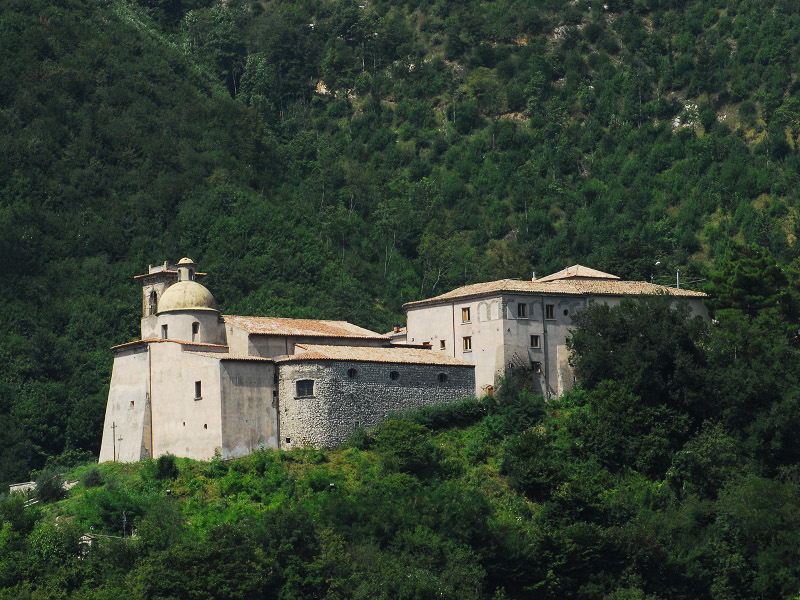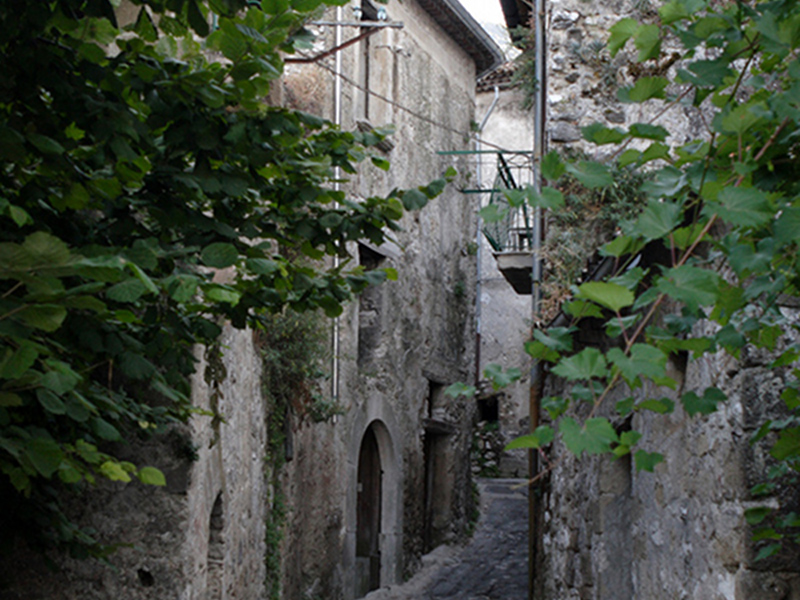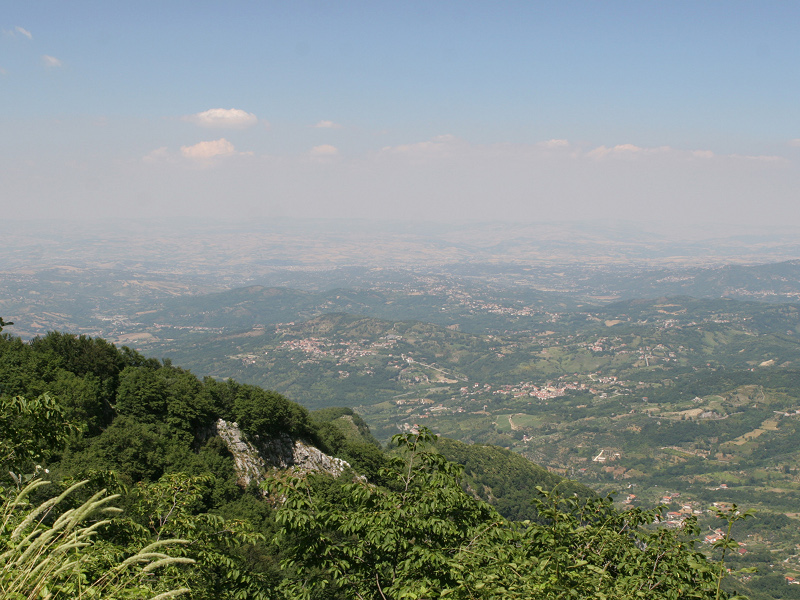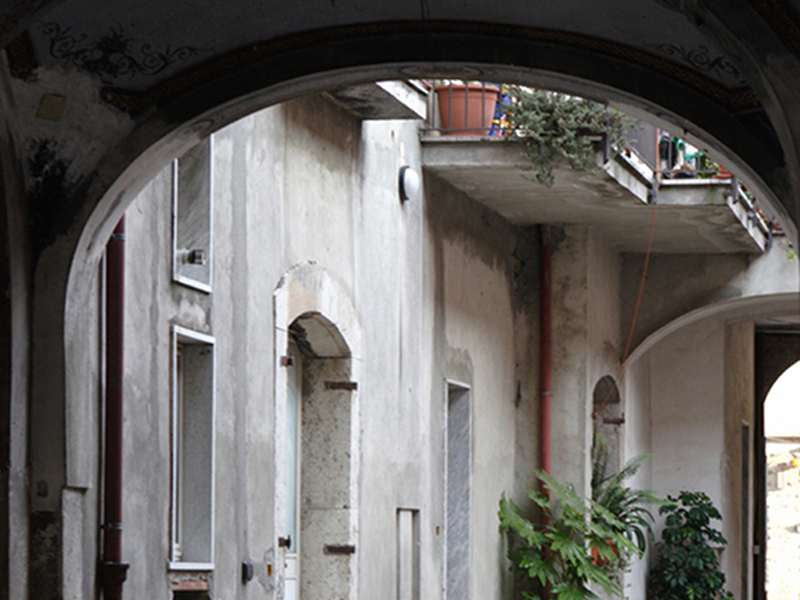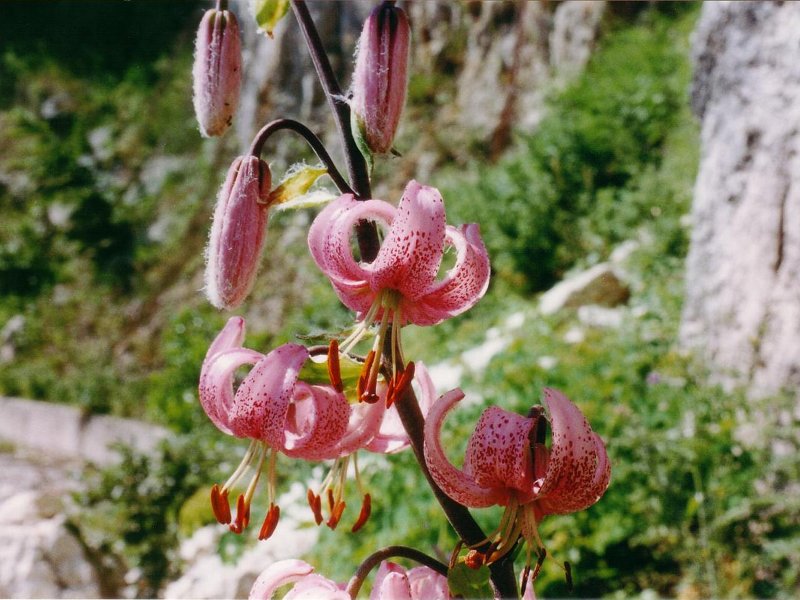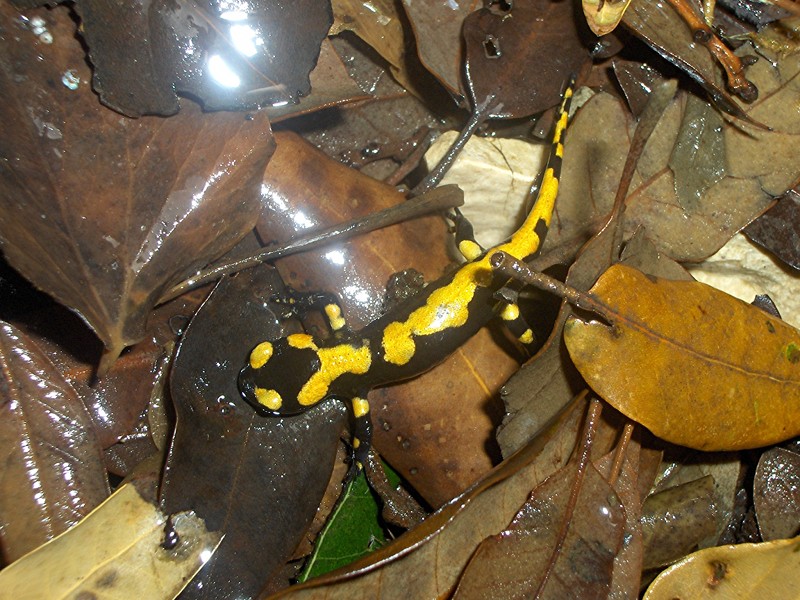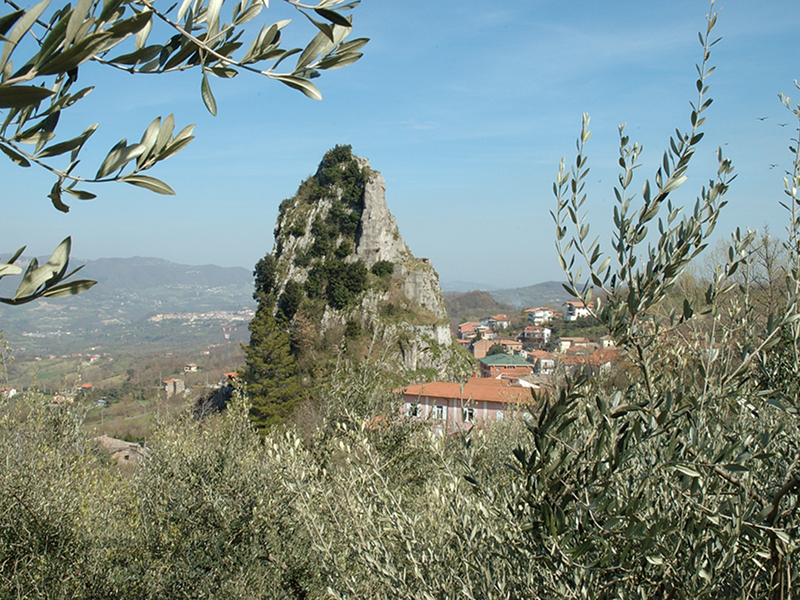Protected Area
Identity Card
- Land Surface Area: 14'870.24 ha
- Regions: Campania
- Provinces: Avellino, Benevento, Caserta, Napoli
- Municipalities: Arienzo, Arpaia, Avella, Baiano, Cervinara, Forchia, Mercogliano, Monteforte Irpino, Mugnano del Cardinale, Ospedaletto d'Alpinolo, Pannarano, Paolisi, Pietrastornina, Quadrelle, Roccarainola, Rotondi, San Felice a Cancello, San Martino Valle Caudina, Sant'Angelo a Scala, Sirignano, Sperone, Summonte
- Establishment Measures: LR 33 01/09/1993 - DPGR 5568 2/6/95 - DGR 59 12/2/99 - DPGR 780 6/11/2002
- PA Official List: EUAP0954
- Park Authority: Ente Parco Regionale del Partenio
P.I.T. (Integrated Territorial Project)
The Integrated Territorial Project, an essential instrument for Partenio Regional Park, aims at creating Sustainable Development conditions for the territory, through conservation, enhancement, promotion, and use of the naturalistic, environmental, historical-religious, and cultural resources of the protected area. As a matter of fact, the Integrated Planning based on the principle of concentration of the resources in a well-defined area - resources which can be activated through material and immaterial actions, and which are concerted and integrated - aims at ensuring an adequate local development according to the territorial vocation.
Further information (Italian text)
The Park
Partenio Regional Park was established in 2002. It covers an area of
14,870.24 ha and includes 22 Municipalities scattered throughout its
territory, both in the Apennines and in the adjacent valleys: Valle
Caudina, Valle del Sabato, and Vallo di Lauro Baianese. The town
centers, mainly belonging to the Provinces of Avellino and Benevento,
are often situated in the piedmont area, and the roads connecting them
form a circuit surrounding the whole mountain group of Partenio. The
territory of Partenio Regional Park is dominated by Partenio Mountain
Ridge: according to D.M. 03.04.2000, it is a Site of Community
Importance (SCI) developing for over 25 km. The ridge is a calcareous
mountain system with slopes cut by rather deep ravines leading
rainwater and springs down to the valley. The territory of the whole
area interested by Partenio Park is mainly characterized by woodlands;
however, it is also possible to find arboreal and herbaceous
cultivations and pastures. The area is subject to hydrogeological
restrictions. Moreover, large sections of the protected area are
subject to landscape protection.
Partenio chain represents a real
biogeographical island, a green natural lung. Partenio Regional Park is
easily accessible from all the main regional towns. The area is served
by several regional roads, highways (Caserta-Salerno and Napoli-Bari),
via Appia (SS 7) in the north, SS road 7 bis in the south, and railways
(Benevento-Napoli and Avellino-Napoli).
The Park area is crossed by
many trails that, leaving from the town centers, develop among chestnut
and beech tree woodlands and lead to places of great environmental
value.
History and Geomorphology
Partenio was born 3-4 million years ago, between the Pliocene and the Quaternary.
The first settlers of Partenio Mountains seem to have been people belonging to the civilization of the Apennines.
In the territory of Partenio, two of the branches of the Samnite people settled:
- the Caudine settled in Western Sannio, between Lazio and Campania up to Isclero Valley
- the Hirpini settled between Campania and Apulia.
Partenio became a point of contact among these people.
The Park territory is known for one of the most famous historical events: the defeat of the Romans by the Samnites and the Caudine Forks episode, when the latter were humiliated and forced to pass under the yoke of the Samnites.
In the various Municipalities of Partenio Park several evidences of the Samnite Civilization have been found. There are also several existing evidences dating back to the Roman period, like Avella amphitheater.
Further information (Italian text)
Geography
Partenio chain, developing for 30 km, is situated in the heart of
Campania, north-west the town of Avellino, between Mt. Taburno in the
north-west and Picentini Mountains in the south-east. The mountain
group is formed by at least three ridges of different size, developing
from east to west and separated by deep ravines with torrential rivers.
The main summits are Montevergine (1,480m), Mt. Avella (1,598m), and
Mt. Ciesco Alto (1,357m).
The most important river basin is
represented by the river Calore, running in the north. The area is also
crossed by a network of small and short streams. In Avellino, Rio
Vergine flows into Rio Finestrelle, a tributary of river Sabato. The
basin of stream Corvo is situated, from south to north, between the
Provinces of Avellino and Benevento. The mountain basin supplying Regi
Lagni is situated in the Park territory and is formed by the waters of
stream Clanio, involving the provinces of Avellino, Napoli, and
Caserta. Moreover, on the northern slope, river Isclero has its source:
it is a left tributary of Volturno. Another stream is stream Caudino.
Many small watercourses, originating in the mountains, have subterranean courses given to the calcareous nature of the rocks.
Some gorges and waterfalls, like Cascatelle and Acquapendente waterfall, are worth a mention.
From
a geological point of view, Partenio is formed by carbonate deposits of
the Mesozoic period, covered with occasional plates of Tertiary
sediments and a great quantity of pyroclastic material coming from the
nearby volcanic complex of Somma - Vesuvio.
It is also possible to
notice several surface karstic phenomena (dolines, furrowed fields,
etc.) and underground karstic phenomena (with several speleogenetic
evidences, especially on the southern slope).
The several caves
scattered throughout the territory are worth a mention. On the slope of
Nola, for instance, there are 25 cavities. Among the most interesting
ones: Grotta degli Sportiglioni, Grotte di Camerelle, Grotta di San
Michele Arcangelo on the southern slope of Partenio, Grotta di
Mattiuccio and Grotta Candida on the northern slope.
The
fossilipherous phenomena should not be underestimated. As a matter of
fact, in various parts of the territory characterized by calcareous
rocks it is easy to find Stromatolites, Miliolids, Nerineidae,
Diceratidae, Spiroline, Brachiopoda, Radiolitidae, Rudistacea.
There
are areas, often along the watercourses, where it is possible to find
fossils of Gastropods and Lamellibranchs like Murex, Brandaris, Deodora
italica, Cardium, Pecten, Chlamis.
The soil of Partenio is mainly
formed by pyroclastic material, that is materials of volcanic origin
coming from the volcanic complex of Somma - Vesuvio. They are
particularly fertile soils. On the steepest slopes, more interested by
meteoric washing out, the calcareous platforms outcrop. There are also
clayey soils and soils characterized by a calcareous and mixed
structure, the latter situated above all in the southern stretch of the
area.
Flora
The symbol of the floristic beauty characterizing the Park is the
Martagon Lily which, with its charm and elegance, shows off in the
biodiversity case of Partenio. The climate and soil morphology
varieties - the soil is particularly fertile for the presence of
volcanic, calcareous, and clayey materials - have favored the
development of diversified ecosystems rich in a great variety of flora
and fauna.
At lower altitudes there are town centers, cultivated
fields, and the Mediterranean maquis biotope. At higher altitudes,
beech trees mix with other deciduous oaks which gradually dominate
together with chestnut trees. The highest beech tree woodlands give way
to long meadows, also used as pastures in the highest points of the
mountain chain. At these altitudes it is possible to find several
species of naturalistic interest like the Woodland Pink, Etna Violet,
Heartsease, Hawksbeard, Narcissus, Asphodelus, Clover, Bluegrass, and
Armeria.
Near the streams and watercourses it is easy to find various species of
Poplar (Black, White, and Aspen), Italian Alders, Hornbeams, and
Lobel's Maples.
The
rocky flora includes Saxifrages, Grassy Bells, Bellflowers, Centaurea,
Valeriana, Asperula, Daphne, Pimpinella. In the Park there are 33
varieties of Orchids.
Focus
Herbs in the History of Partenio
The use of herbs with healing and aromatic purposes is very ancient. It probably dates back to the birth of life on the earth. There is a "local" history of medicinal plants and their use. A tradition that in Partenio is linked to the famous Montevergine Abbey, the industriousness of the Benedictine Monks, their skills in using vegetables to prepare galenic products since the 12th century and herb liquors since 1882. Always surrounded by woodlands, forests, harsh and intact plateaus after which the mountain has been named, the Monks have been able to adapt to these places and to use the products generously offered by nature without damaging the surrounding environment. This activity, handed down over the centuries and gradually adapted to the time, led to the creation of special structures necessary to continue the tradition also for the benefit of the local people. Everyone knows the famous Benedictine Pharmacy situated in Loreto abbey palace.
The Wild Chamomile of Partenio
The symbol of the medicinal plants of Partenio is Matricaria Partheniurn L. or Anthemis of Partenio. It is the main ingredient of the famous liquor produced by the Benedictine Monks from Montevergine, the so-called "Anthemis", characterized by a dark green color, as well as by tonic and anti-stomatitis properties. Matricaria Partheniurn L., once very known in the area, has become a rare plant: it should not be picked up and should be protected. It is similar to chamomile. Stalks of about 16 cm, green-grayish leaves about 9 mm long and no more than 1 -2 mm wide. Flowers with an intense yellow color, about 15 for each plant, with a diameter of 3-4 cm when they are in bloom. Its presence is not limited to the highest calcareous areas of the territory, between 1,000 and 1,400m. It blooms between June and July. It has a penetrating smell and a bitterish taste. It has antinflammatory, digestive, emmenagogic, febrifugal, sedative, and tonic properties. It contains the same active ingredients of chamomile: azulene.
Fauna
While strolling around the luxuriant nature of Partenio, it is easy to meet wildlife species of great value.
For
instance, the Park houses 11-12 species of amphibians, living near
streams, resurgences, wells, and channels. Some of them are of
particular conservation interest, like the Spectacled Salamander and
the Italian Newt.
The Fire Salamander (with its showy yellow spots),
the Yellow-bellied Toad, the Green Toad, and the Italian Tree Frog are
also of great value and rare beauty.
Among the several varieties of
reptiles, the European pond terrapin is worth a mention. Of course,
there is also a great number of mammals: several specimens of European
Pine Marten, Badger, Fox, Beech Marten, and Weasel populate the area,
while the Apennine Wolf is present with a few rare specimens. If you
love bird watching, Partenio offers several surprises: you can listen
to the beating of the Great Spotted Woodpecker and the Green Woodpecker
or admire the flight of big birds of prey like the Buzzard, the Common
Raven, and the Peregrine. Several specimens of Eagle Owl live in the
WWF Nature Sanctuary.
Climate
The Park is characterized by a very variable climate depending on its
proximity to the sea. In its mountains, the highest national rainfalls
have been recorded, with 2,200 mm/year and 121 days of rain. At lower
altitudes this value is lower, sometimes much lower. The most rainy
months are November, December, and January. In the Park mountain areas
there are no dry periods, since rainfalls are registered also in
summer. The situation at lower altitudes is different: as a matter of
fact, during the summer there are no rainfalls at all.
In July (the
hottest month) temperatures go from 17 and 26°C according to the
altitude, while the average temperature in January (the coldest month)
is 0°C, and sometimes lower according to the altitude. Snow falls also
in great quantities in winter, in the mountains. The main winds blow
from NE, followed by the winds blowing from SW and bringing rainfalls.


